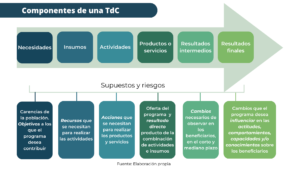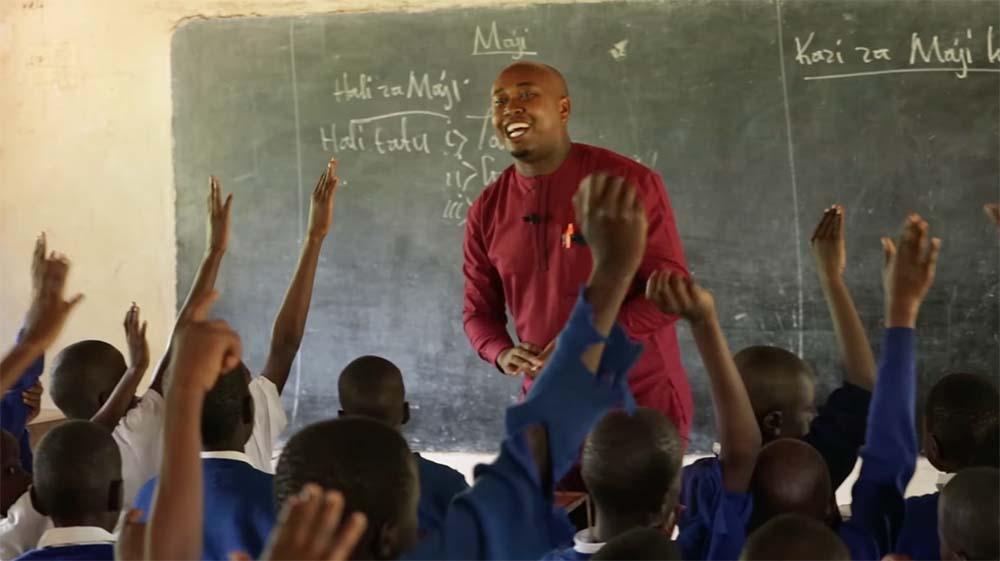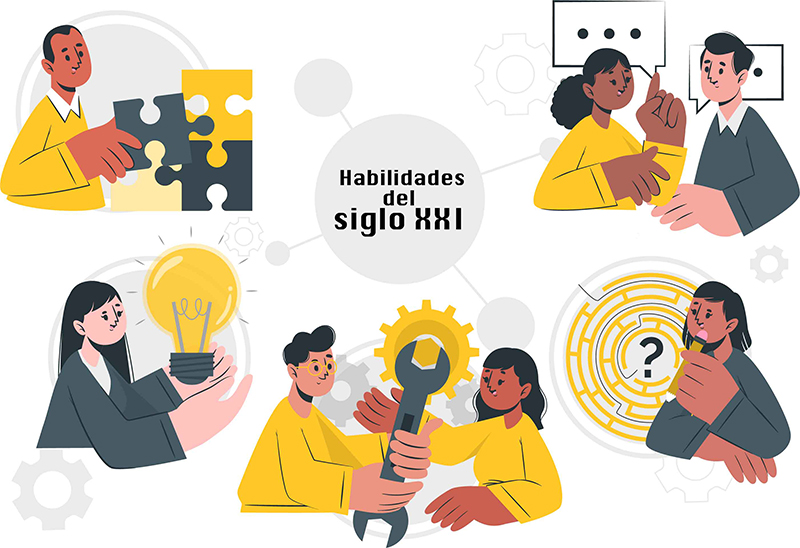The challenges facing education systems in terms of access, retention, learning, or skill development, among others, are vast and numerous. In this context, public and private organizations have focused their efforts on creating and implementing innovative solutions to improve the quality of education, resulting in a growing diversity of school programs and interventions. However, little is known about the actual impact of these actions on improving education. One of the greatest challenges for teams implementing these initiatives is identifying appropriate and relevant evaluation strategies that help recognize the type and magnitude of the results achieved.
How do we know if the promoted innovations are effectively reaching the expected impact in educational communities? Popularized in the 1990s, the Theory of Change (ToC) emerged as a fundamental tool to graphically represent intervention processes and the evaluation of programs, projects, and policies. Its focus is on the detailed exploration of the various components that make up an intervention, aiming to understand how they work and what causal relationships lead to the achievement of expected results. However, its use is still limited among organizations aspiring for educational transformation.
At SUMMA, the Research and Innovation Laboratory in Education for Latin America and the Caribbean, we support programs in the development and evaluation of their Theory of Change. In this publication, we share some guidelines for understanding this tool, based on our collaboration with ProFuturo during 2023.
Popularized in the 1990s, the Theory of Change (ToC) emerged as a fundamental tool to graphically represent intervention processes and the evaluation of programs, projects, and policies.
Conceptualizing the Theory of Change
The Theory of Change is a logical model that describes the process by which a program is structured and pursues the achievement of its results. To do this, it clearly and schematically presents the path the intervention must follow to achieve the desired impact. To meet this objective, the theory must identify and properly describe:
- The need that the program seeks to meet in the population (e.g., low academic performance among students in socioeconomically vulnerable schools).
- The resources necessary to carry out the activities (e.g., new pedagogical materials and technological devices to create more engaging teaching for students).
- The actions and activities that will be carried out during the intervention (e.g., teacher training in the use of new pedagogies or training for the use of new learning platforms).
- The changes that the program aims to achieve in the short and medium term (e.g., educational communities motivated to use new resources or teachers implementing new pedagogical practices in the classroom).
- The long-term changes that the program expects to achieve, also known as the theory of change (e.g., students improving their academic performance through the development of new knowledge and skills).
Thus, a good Theory of Change explains how a program works, detailing the entire sequence of the intervention and the causal relationships that support the expected transformation. The following figure describes its main components.

Source: Summa.
As a methodology, the Theory of Change offers benefits in the planning and evaluation processes of educational programs. These benefits include identifying key and secondary activities, determining the main actors to drive change, organizing and scheduling activities over time, among other aspects. This tool not only helps to accurately define the objectives of an intervention and the expected outcomes but also promotes alignment and coherence of the various resources and activities that make up an intervention. Additionally, it allows for explicit visualization and understanding of the causal relationships between the activities carried out and the expected results.
Moreover, the Theory of Change provides a consistent justification of the what, how, and why of programs. It is a highly useful tool for building the strategic narrative of an intervention and gaining a deep understanding of it, which facilitates adjusting and changes without distorting the central objective of the programs.
In terms of its utility for impact evaluation development, this logical model facilitates the measurement processes of the “success” of an intervention by establishing clear and measurable indicators at each stage of the process. It helps explain, through prioritizing actions, the causal mechanisms, the monitoring of outputs and expected results, and the conditions under which the expected changes are achieved or not.
“There is no better practice than a good theory”
During 2023, SUMMA and ProFuturo established a strategic alliance to identify areas for improvement in the program in order to maximize its impact in Latin America. To achieve this goal, the Theory of Change model was used, and the experiences of various countries in the region were investigated. Furthermore, in December 2023, SUMMA led a workshop with ProFuturo’s global team, where collaborative reflection took place on the program’s Theory of Change, and the lessons, strengths, and weaknesses of the actions carried out were identified.
Valentina Ríos, strategy and evaluation manager at ProFuturo, shared her perspective on the experience, “very enriching for our team, as it allowed us to analyze the models we implement and the alignment of the activities we develop in the countries. We also paused to think and evaluate if we are moving in the right direction to achieve the educational transformation we seek.”
Dante Castillo-Canales, director of policies and innovative practices at SUMMA, reflected on this collaboration between SUMMA and ProFuturo, emphasizing the importance of working with the Theory of Change: “Working with the Theory of Change involves a permanent and systematic process of analyzing those actions we prioritize and the mechanisms that are key to achieving the results we expect. Our work with ProFuturo has contributed to exploring the essential components of their model and providing feedback on their strategic narrative, as a program that learns from its interventions and seeks improvement to impact educational communities.”
The findings from this process highlighted the diversity of situations, challenges, and successes in implementing a technology-mediated global educational program like ProFuturo. This translates into the need to recognize the adaptations of the Theory of Change carried out in the countries, without losing sight of its main ingredients and components. Therefore, the ToC, as a tool for educational programs, must be a constantly revised and updated tool, based on the results provided by the program evaluation processes. This complexity underscores the need for constant interaction and feedback between theory and practice, as the social psychologist Kurt Levin noted in the mid-20th century with his idea that there is no better practice than a good theory, inviting us to think about the always necessary articulation between theoretical models that guide and orient social actions and the concrete practices that test these guides and subject them to the test of reality and its possibilities.
To delve into this topic, we invite you to explore the following resources:
- “The Theory of Change” (Rogers, 2014). Part of the Methodological Synthesis collection from UNICEF’s Research Center.
- “How to design goals and indicators for monitoring and evaluating public policies?” (Aquilino et al., 2019) Methodological Guide from the Public Policy Implementation Center for Equity and Growth in Argentina.






